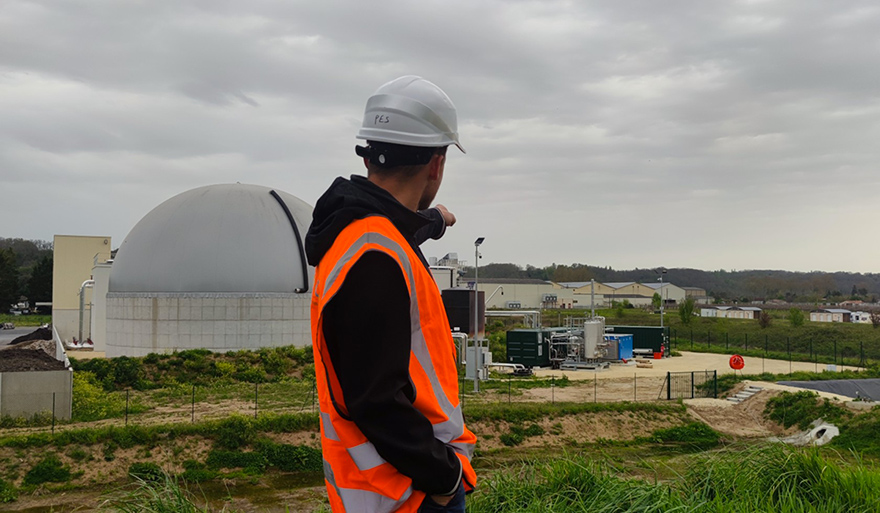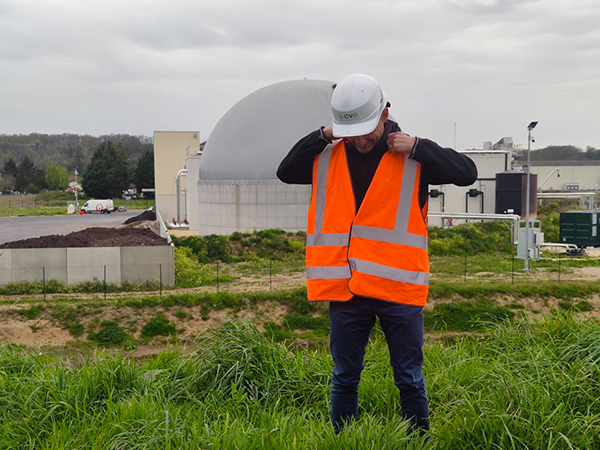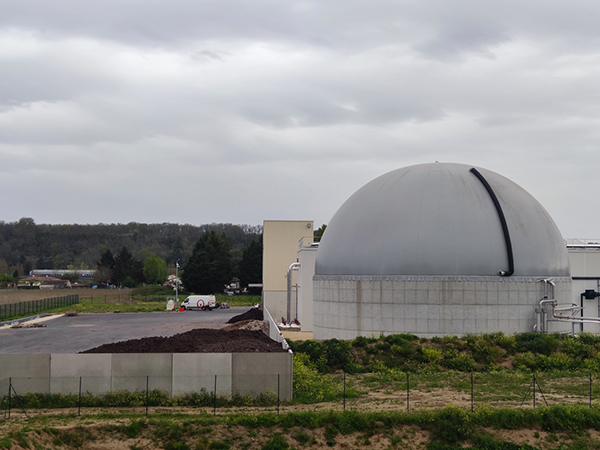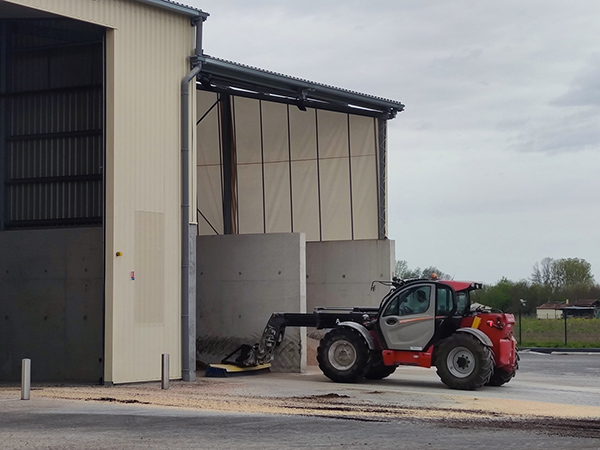Biogas in New Aquitaine: finding the right price
Small biogas plants are flourishing in New Aquitaine, a region of southwest France. In the fields in Saint-Antoine-de-Breuilh, another one has just been inaugurated. But while methanisation obviously has a role to play in the ecological transition, its role in France’s energy mix still needs to be settled.

Saint-Antoine-de-Breuilh (France)
Brand new, clean and odourless: the new plant at Breuilh seems to be a fine example of a successful methanisation plant. Inaugurated last March in the small Neo-Aquitaine village of Saint-Antoine-de-Breuilh, the fledgling unit is already operating at full capacity.
Grape pomace, paper scraps, vegetable fats: in its belly the plant anaerobically digests organic waste from the region's agricultural industries, producing the elixir of the gas market: biomethane. "A green gas, a local energy", in the words of Paul Escale, an engineer from Cap Vert Energie (CVE) in charge of the project over the past eight years. He is back on site for a routine visit.
With five to ten times less emissions than natural gas (according to the latest report of the French Senate), biomethane is one of the key investment vehicles for the French energy transition. In France, 80% of European funds for the 2014-2021 period were dedicated to heating and methanisation solutions. Decarbonisation, national energy sovereignty, positive externalities of organic waste generated by farms and industry – for all these reasons, the sector is generously subsidised in New Aquitaine.

The ERDF's quandary
To finance its total cost of €10 million, CVE's Breuilh unit benefited from a number of subsidies: €350,000 from the regional government, €950,000 from the French Environment and Energy Management Agency (ADEME), and €722,000 from the European Regional Development Fund (ERDF).
This funding was made easier by the support of the project's minority shareholder, the utility company ENGIE BIOZ: "Eight years ago, CVE was a very small business. Joining forces with ENGIE helped to reassure certain financiers, and probably convinced them that it was viable," explains Paul Escale. Although this plant operates as an industrial unit in which ENGIE holds 49% of the capital, methanisation remains mainly farm-based in New Aquitaine.
But the high cost of projects, the poor coordination among funding agencies and growing energy requirements make financing complicated for farmers.
The economist Pascal Grouiez has analysed these difficulties in his study "Métha'Revenus": "The granting of a loan by banks depends on the amount of equity, which in turn depends on the amount of regional subsidies granted. The regional government therefore plays an important role in the selection of projects", explains this expert.
The study, published in 2020, shows that gas-injection projects are the most profitable, but they are still the preserve of large gas companies or major industrial cereal-farming groups. "Injection requires a very large investment. Such amounts are difficult to bear by farmers whose financial situation is often fragile," the report stresses.
It concludes: "In the absence of public subsidies, it is likely that methanisation by injection will only become accessible to the most financially solid farmers".
Over the period 2014-2020, the allocation of €27 billion in European and regional subsidies has made possible 33 projects in New Aquitaine. About a quarter are industrial and three quarters are farm-based.
Julien Jimenez, the subdirector responsible for this energy solution in the New Aquitaine Region, explains the selection process: "Overall, profitability is lower with the agricultural model than with the industrial one. For a single farmer's operation, we favour regional funds, because the European mechanism is a bit cumbersome for an agricultural project. But whenever we are looking at pooling or an integrated energy project, we use European funds."
For its new financing plan for the period 2021-2027, the EU no longer wishes to finance large groups. The decision has upset regional authorities: "The energy transition represents billions of euros of investment. It is capital-intensive. It's hard to believe that SMEs will be the ones carrying out the energy transition – they won't have the means. We absolutely must include these large companies," insists Julien Jimenez.
Reversing the trend
The current energy context makes these issues even more complex. The end of the Covid pandemic, and the embargo on Russian gas with the war in Ukraine, have created a peak in energy demand. For Julien Jimenez, the objective of profitability and competitiveness has been replaced by an imperative: "Don't drop any type of methanisation, so as to reach the 30% of biogas in the energy mix" – which is the 2030 objective.

The technical challenge is not to be underestimated: "The French gas network was built in accordance with its source in Russia. We need to be able to reverse the network to inject gas from one distribution point to another. Allowing gas to flow in the opposite direction and exporting it is a real matter of state power," explains the specialist Pascal Grouiez.
This expert maintains that he finds it difficult to believe in the total substitution of natural gas by methanisation on a national or European scale. He explains that the scenario of 30% renewable energy from biogas would require a 50-fold increase in the number of methanisation plants compared to the current figure.
That is an impossible requirement for 2030. It’s a risky situation: "It's true that there is a whole methanisation sector that will escape us. We need to be more demanding of the large groups than of the farmers," concedes J. Jimenez.
Young biogas plant seeks organic waste
The EU is also wary of energy crops – the use of land solely for the production of methanogenic waste.
"It is also a question of agricultural choices: do we want to use so much land for growing crops for methanisation? It's a bad idea, to the extent that we haven't found a solution to meet the 30% target without falling into the industrial-agriculture model with huge installations," sighs Pascale Grouiez.

In Saint-Antoine-de-Breuilh, the company uses part of its own biogas to meet its energy needs. It feeds its gas into the local network, using waste collected from within a 60 km radius.
This type of local-loop operation could be compromised by the increase in the number of biogas plants planned for the New Aquitaine region between now and 2030, and the emergence of new competition. It will then be necessary to look elsewhere for raw materials, and elsewhere is sometimes just too far away.
 This article was produced as part of the Union Is Strength competition, organised by Slate.fr with the financial support of the European Union. The article reflects the views of the author and the European Commission cannot be held responsible for its content or use.
This article was produced as part of the Union Is Strength competition, organised by Slate.fr with the financial support of the European Union. The article reflects the views of the author and the European Commission cannot be held responsible for its content or use.